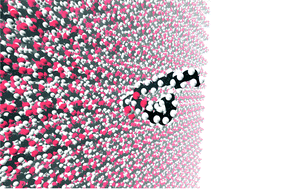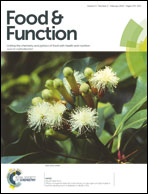Modeling complex and multi-component food systems in molecular dynamics simulations on the example of chocolate conching
Abstract
Additional benefits of foods are an increasing factor in the consumer's purchase. To produce foods with the properties the consumer demands, understanding the micro- and nanostructure is becoming more important in food research today. We present molecular dynamics (MD) simulations as a tool to study complex and multi-component food systems on the example of chocolate conching. The process of conching is chosen because of the interesting challenges it provides: the components (fats, emulsifiers and carbohydrates) contain diverse functional groups, are naturally fluctuating in their chemical composition, and have a high number of internal degrees of freedom. Further, slow diffusion in the non-aqueous medium is expected. All of these challenges are typical to food systems in general. Simulation results show the suitability of present force fields to correctly model the liquid and crystal density of cocoa butter and sucrose, respectively. Amphiphilic properties of emulsifiers are observed by micelle formation in water. For non-aqueous media, pulling simulations reveal high energy barriers for motion in the viscous cocoa butter. The work for detachment of an emulsifier from the sucrose crystal is calculated and matched with detachment of the head and tail groups separately. Hydrogen bonding is shown to be the dominant interaction between the emulsifier and the crystal surface. Thus, MD simulations are suited to model the interaction between the emulsifier and sugar crystal interface in non-aqueous media, revealing detailed information about the structuring and interactions on a molecular level. With interaction parameters being available for a wide variety of chemical groups, MD simulations are a valuable tool to understand complex and multi-component food systems in general. MD simulations provide a substantial benefit to researchers to verify their hypothesis in dynamic simulations with an atomistic resolution. Rapid rise of computational resources successively increases the complexity and the size of the systems that can be studied.

- This article is part of the themed collection: Computer Simulation of Nano and Mesoscale Effects on Food System Properties

 Please wait while we load your content...
Please wait while we load your content...